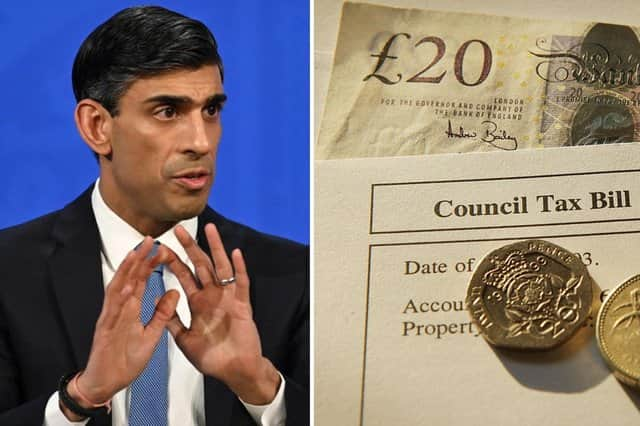Council tax: do people in Liverpool City Region pay more or less than the national average?
and live on Freeview channel 276
Voters in the Liverpool City Region and across England will be heading to the polls on Thursday for the 2022 local elections – and with the cost of living crisis continuing to bite, council tax remains as thorny an issue as ever before.
Boris Johnson has promised electors that a vote for Conservative candidates will help keep council tax low, accusing Labour controlled local authorities of imposing bigger levies on residents.
Advertisement
Hide AdAdvertisement
Hide AdBut councils across England have faced enormous budget cuts at the hands of the Tory-run central government since 2010, increasing their reliance on council taxpayers to fund vital services – against a backdrop of an ageing and growing population, which is increasingly expensive to care for.
Council tax bills have risen at twice the rate of inflation in England since 2015, when the Conservatives won an overall majority in Parliament.


What is council tax and how is it set?
Council tax is a system of local taxation linked to the value of properties. It is one of the main sources of funding for councils, which provide a huge range of services including education, housing, social care, sports and leisure facilities, public health, arts and culture and road maintenance.
In England, properties are placed into one of eight bands from A (cheapest council tax) to H (most expensive). Each country has a nation-wide scale for assigning properties to bands based on their historical value.
Advertisement
Hide AdAdvertisement
Hide AdBut local councils – and other authorities funded by council tax, such as police and fire services – then set the fees that they charge for each band.
How high is council tax in Liverpool City Region compared to other parts of the country?
Council tax rates vary enormously across the country – none more so than in England, where there is a gap of more than £1,400 between the cheapest and priciest areas for a band D property, a common benchmark for comparison.
On average, band D households in England are paying £1,965.70 in 2022-23, according to figures from the Department for Levelling Up, Housing and Communities. The lowest fee is in Westminster, at just £865.78, while the highest is in Rutland, in Leicestershire, at £2,300.03.
- In Liverpool, the fee is £2194.97, which is 11% more than national average.
- In Sefton, the fee is £2121.77, which is 7.6% more than national average.
- In Wirral, the fee is £2052.58, which is 4.3% more than national average.
- In Knowsley, the fee is £2047.45, which is 4.1% more than national average.
- In St Helens, the fee is £1971.86, which is 0.3% more than national average.
- In Halton, the fee is £1937.07, which is 1.5% less than national average.
In England band D is reserved for houses that were worth between £68,000 and £88,000 in 1991.
Advertisement
Hide AdAdvertisement
Hide AdThat could mean councils in wealthier areas are better able to keep council tax rates low, as a higher proportion of properties there will fall into bands E to H and pay the higher fees.
In poorer areas, where house prices have been consistently lower, more people may fall into bands A to C and pay the council’s cheapest rates.
Loading....
Is your tax increase this year higher than average?
Council tax was among the many bills posing steep increases for families last month – although rises will have been offset by a £150 council tax rebate for those in band A to D properties.
In England the average price rise between 2021-22 and 2022-23 is 3.5% - there was widespread variation across the country, however.
Advertisement
Hide AdAdvertisement
Hide AdResidents in Southampton saw the smallest increase, with bills rising by just 0.8%, while Sandwell saw a huge increase of 5.2%.
- Residents in Liverpool saw bills rise by 3.1% - less than the England average of 3.5%.
- Residents in Sefton saw bills rise by 3.1% - less than the England average of 3.5%.
- Residents in Wirral saw bills rise by 3.1% - less than the England average of 3.5%.
- Residents in Knowsley saw bills rise by 3.1% - less than the England average of 3.5%.
- Residents in St Helens saw bills rise by 3.1% - less than the England average of 3.5%.
- Residents in Halton saw bills rise by 3.1% - less than the England average of 3.5%.
The below chart shows you how the average charge faced by properties in your area changed last year compared to comparable councils and the England average.
Comment Guidelines
National World encourages reader discussion on our stories. User feedback, insights and back-and-forth exchanges add a rich layer of context to reporting. Please review our Community Guidelines before commenting.